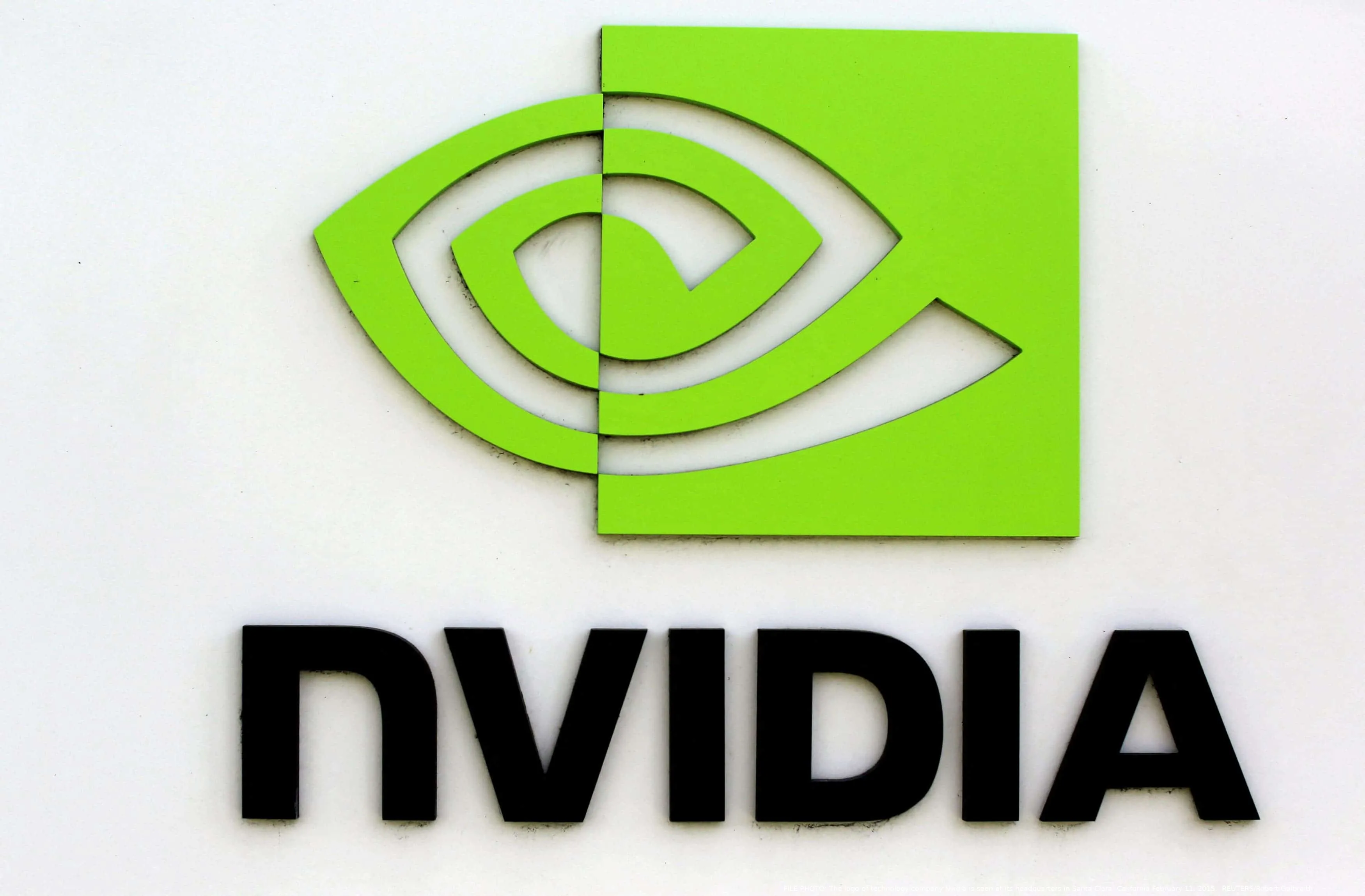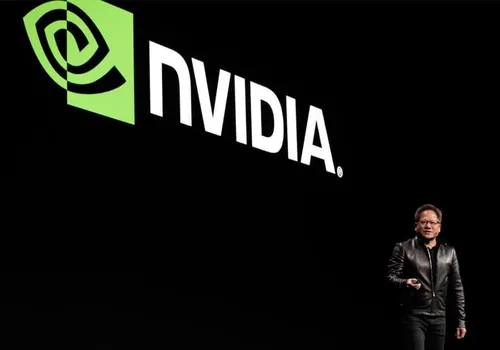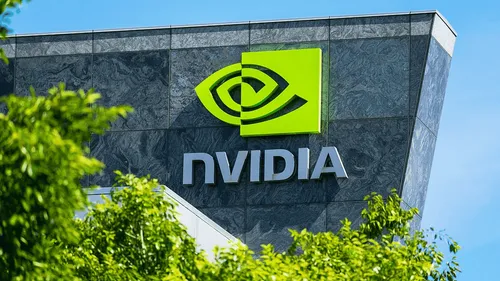
On June 18th, 2024, Nvidia Corporation (NVDA) etched its name in financial history by becoming the world's most valuable company by market capitalization. This remarkable feat culminated from a meteoric rise in its stock price, which surged 3.6% that day, pushing its market cap to a staggering $3.34 billion, surpassing tech titans like Microsoft and Apple.
Nvidia's Ascendancy: How the Chipmaker Became the World's Most Valuable Company

This achievement marks the culmination of a phenomenal year for Nvidia. The company's stock price has witnessed a staggering 170% increase year-to-date, fueled by a robust first-quarter earnings report earlier in 2024. But the true extent of Nvidia's growth becomes evident when we consider the stock price's ninefold increase since the end of 2022. This surge coincides perfectly with the exploding popularity of generative artificial intelligence (AI).
Nvidia's dominance in the AI chip market is a key factor driving its success. The company currently holds a commanding 80% market share for AI chips used in data centers, which are the backbone for major players like OpenAI, Microsoft, Alphabet, Amazon, Meta, and countless others developing cutting-edge AI applications. This dominance was further underscored in Nvidia's recent quarterly report, which revealed a phenomenal 427% year-over-year growth in its data center business revenue, constituting a remarkable 86% of the company's total sales.
However, Nvidia's journey to the top wasn't always destined for AI. For a significant period, the company was primarily known for its high-performance graphics processing units (GPUs) catering to the gaming industry. While Nvidia did dabble in other ventures like cryptocurrency mining chips and cloud gaming subscriptions, these endeavors ultimately proved less successful. It was the strategic shift towards the burgeoning field of AI that truly propelled the company to unprecedented heights.
This strategic shift has not only benefitted Nvidia but also significantly enriched its co-founder and CEO, Jensen Huang. A recent Forbes report placed Huang at the 11th spot on the world's richest individuals list, with an estimated net worth of a staggering $117 billion.
Delving Deeper: Decoding Nvidia's Success
Several key factors have contributed to Nvidia's phenomenal success in the AI chip market. Here's a closer look at some of the most significant ones:
- Pioneering Hardware Architecture: Nvidia's GPUs are renowned for their unique architecture, specifically designed for parallel processing tasks – a crucial requirement for efficient AI computations. This allows for faster training and execution of complex AI models compared to traditional CPUs.
- Software Development and Optimization: Beyond hardware, Nvidia has invested heavily in developing a comprehensive software ecosystem for its GPUs. This includes frameworks like CUDA and TensorRT, which offer developers tools and libraries specifically optimized for AI workloads on Nvidia hardware. This developer-friendly approach has spurred widespread adoption of Nvidia's solutions within the AI community.
- Strategic Partnerships and Acquisitions: Recognizing the growing importance of a holistic AI ecosystem, Nvidia has forged strategic partnerships with various technology leaders. Additionally, the company has made key acquisitions, such as Mellanox Technologies, a leading provider of high-performance networking solutions, further expanding its offerings and solidifying its position within the AI infrastructure landscape.
- The Rise of Generative AI: The recent surge in popularity of generative AI applications, such as large language models and deepfakes, has significantly increased demand for high-performance AI compute resources. As the undisputed leader in AI chips, Nvidia is perfectly positioned to capitalize on this rapidly growing market segment.
Looking Ahead: The Future Trajectory of Nvidia
While Nvidia's current position is formidable, the company faces several challenges as it looks towards the future. Here's a glimpse into some of the potential hurdles:
- Intensified Competition: The success of Nvidia has attracted numerous competitors. Including established chipmakers like Intel and AMD, as well as emerging players like Graphcore. This intensifying competition could put pressure on Nvidia's market share and force them to innovate at an even faster pace.
- Geopolitical Tensions: The ongoing trade tensions between the United States and China could pose significant challenges for Nvidia. A significant portion of Nvidia's manufacturing is located in Asia, and any disruption in this supply chain could impact production and profitability.
- Shifting Market Trends: The field of AI is constantly evolving, and new AI chip architectures and training paradigms are constantly emerging. Nvidia must demonstrate its agility and adaptability to stay ahead of the curve and maintain its leadership position.

Additional Considerations for Nvidia's AI Ascendancy
Beyond the core factors driving Nvidia's success, a more comprehensive analysis requires delving deeper into specific areas:
1. The Evolving Role of AI in Different Industries
Nvidia's AI technology isn't confined to data centers. Explore how it empowers various industries:
- Healthcare: AI-powered medical imaging analysis can revolutionize disease diagnosis and treatment planning. Nvidia's GPUs can accelerate complex medical simulations and drug discovery processes.
- Finance: AI algorithms can analyze vast financial data for fraud detection, risk management, and personalized investment recommendations. Nvidia's technology can power high-frequency trading systems.
- Autonomous Vehicles: The development of self-driving cars relies heavily on AI for real-time perception, decision-making, and path planning. Nvidia's AI chips are crucial for processing sensor data and running complex autonomous driving algorithms.
By examining how Nvidia's AI technology shapes these industries, you can assess its broader impact and potential for future growth.
2. The Ethical Implications of AI:
The rise of AI raises ethical concerns:
- Bias: AI models trained on biased data can perpetuate social inequalities. Analyze Nvidia's efforts to promote fairness and mitigate bias in AI development.
- Privacy: AI systems that collect and analyze vast amounts of personal data raise privacy concerns. Discuss Nvidia's approach to ensuring data privacy and security within its AI solutions.
- Job Displacement: As AI automates tasks, job losses in specific sectors are inevitable. Explore how Nvidia can contribute to workforce retraining and reskilling initiatives.
Addressing these ethical concerns is crucial for responsible AI development and fostering public trust in Nvidia's technology.
3. The Future of AI Hardware:
The landscape of AI hardware is constantly evolving:
- Neuromorphic Computing: Explore the potential of neuromorphic chips designed to mimic the human brain's structure and function. Discuss how Nvidia might adapt its architecture to stay competitive in this emerging field.
- Quantum Computing: While still in its early stages, quantum computing has the potential to revolutionize AI by enabling faster and more complex computations. Analyze Nvidia's potential role in integrating quantum technologies with its existing AI hardware solutions.
By discussing these advancements, you can assess how Nvidia plans to keep pace with future hardware innovations and maintain its leadership position.
4. The Sustainability of the AI Boom:
The energy consumption required for training complex AI models is significant:
- Energy Efficiency: Analyze Nvidia's efforts towards developing more energy-efficient AI hardware and software solutions. Discuss potential collaborations with renewable energy providers to create sustainable AI infrastructure.
Exploring Nvidia's approach to sustainability showcases its commitment to responsible technology development and its ability to create a future where AI advancements go hand-in-hand with environmental responsibility.
Investigating these additional points will provide a richer and more nuanced analysis of Nvidia's role in the AI industry. It will go beyond its current market dominance and delve into the company's impact on specific sectors, its approach to ethical considerations, its ability to adapt to future hardware advancements, and its commitment to sustainable AI development. Ultimately, this deeper analysis will offer a more comprehensive understanding of Nvidia's journey and its potential to shape the future of AI technology.
Conclusion: A Paradigm Shift in the Tech Landscape
Nvidia's ascension to the top of the market capitalization rankings signifies a significant paradigm shift within the tech landscape. As AI continues to permeate various industry sectors, the demand for high-performance AI compute resources will only continue to rise. Nvidia, with its dominant market position and commitment to innovation, is well-positioned to ride this wave and shape the future of AI technology. However, the company cannot afford to rest on its laurels. Navigating the challenges of fierce competition, geopolitical uncertainties, and a rapidly evolving technological landscape will be crucial in determining Nvidia's long-term success.
In conclusion, Nvidia's rise to the top of the market capitalization rankings marks a significant turning point in the history of technology. As AI continues to revolutionize various sectors, Nvidia's role as a leading innovator in AI hardware will undoubtedly shape the future of this transformative technology. However, the company's continued success hinges on its ability to navigate the challenges it faces and adapt to the ever-evolving technological landscape.
Popular News
Latest News
Loading




